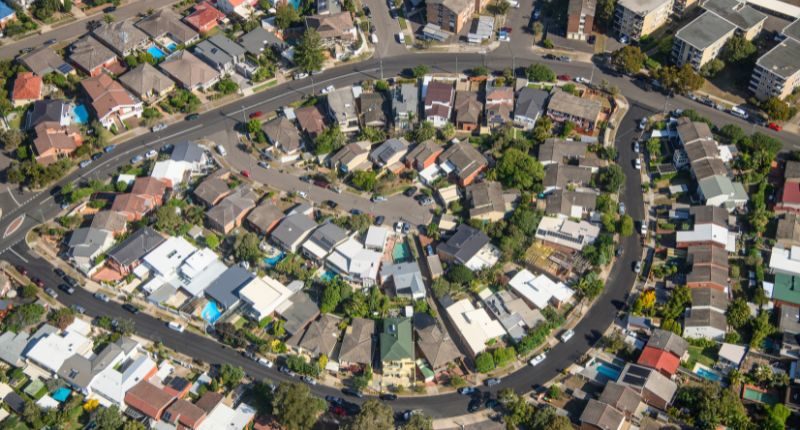- Easing markets in Sydney, Melbourne and Canberra are driving national decline
- All other capitals have maintained growth in housing markets
- Interest rates, rising stock levels and the lower consumer sentiment are all contributing factors
Higher interest rates, rising stock levels and the lower sentiment are behind the easing of housing markets with CoreLogic‘s combined capitals Home Value Index for May recording its first fall since September 2020.
Sydney and Melbourne continued their trajectory of the month on month falls with declines of 1% and 0.7% respectively. Canberra recorded its first fall since July 2019 with prices easing 0.1%.
Declines across the three cities pushed the combined capitals index -0.3% lower over the month. This is despite all other capitals still recording growth.
CoreLogic’s Research Director Tim Lawless pointed out that not even the 0.5% rise in housing values across Australia’s combined regional areas, was enough to keep the national index in the positive monthly territory.
Impact of Interest Rates
In May the Reserve Bank of Australia (RBA) lifted the cash rate to 0.35% in the first rise since November 2010. In June this was followed up by another increase to 0.85%.
Mr Lawless said the trajectory of interest rates will be a key factor in future housing market outcomes. Forecasts for where the cash rate may land are varied.
The RBA has indicated intentions to take further steps to combat inflation and has signalled that it would not be unreasonable to expect interest rates to get back to 2.5%.
As normalising interest rates over the next 12 to 18 months curb demand, CoreLogic expects most of Australia’s capital cities to move into a period of decline.
With the housing debt to household income ratio at record highs, buyers are likely to be somewhat sensitive to rising interest rates.
“There’s been significant speculation around the impact of rising interest rates on the property market.”
Tim Lawless, CoreLogic Research Director
“Last month’s increase to the cash rate is only one-factor causing growth in housing prices to slow or reverse,” he said.
“It is important to remember housing market conditions have been weakening over the past year, at least at a macro level.”
Stock trends
Increasing advertised stock levels seem to be dictating the easing property prices in Sydney and Melbourne where inventory is now elevated.
Sydney’s advertised listings are 5.1% higher than a year ago and 1.5% above the five-year average. Similarly, Melbourne’s advertised stock levels are up 1.3% on last year and 8.1% higher than the five-year average.
“With stock levels now higher than normal across Australia’s two largest cities, buyers are back in the driver’s seat,” Mr Lawless said.
“Higher listings add to tougher selling conditions more broadly. Vendors in Sydney and Melbourne have faced lower auction clearance rates since mid-April and those selling via private treaty are taking longer to sell with higher rates of discounting.”
It should be noted that on a national level advertised stock levels remain -10.3% lower than levels seen this time last year and -28.4% below the five year average.
Stock levels remain below average across most capitals, especially in the cities where housing values are increasing at the fastest rate. Adelaide (-39.5%), Brisbane (-38.2%) and Perth (-34.7%) all have advertised stock well below the five-year average.
Consumer sentiment
Consumer sentiment is now at its lowest level since August 2020 when household consumption was dampened by the ‘second wave’ lockdown in Victoria. The Westpac-Melbourne Institute Index of Consumer Sentiment reported a 5.6% month on month decline in May.
Consumer attitudes and housing market activity have historically demonstrated a correlation.








